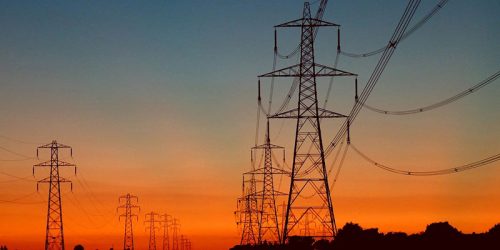ISLAMABAD: The circular debt is set to alarmingly increase up to Rs4,936 billion by financial year 2025 with an increase of 2.04 times from the current level of Rs2,400 billion, highlights the report on Pakistan’s Power Sector Circular Debt Causes, Consequences, and Remedies prepared by Pakistan’s leading economist Sakib Sherani of Macro Economic Insights (MEI).
Sherani served as Member, Prime Minister’s Economic Advisory Council, and Principal Economic Adviser, Ministry of Finance, Government of Pakistan. The stock of circular debt is still projected by MEI to increase to over Rs3,000 billion by 2025, under the best case (strong reforms) scenario.
This represents an addition of Rs616 billion from current levels. In the base case, the MEI report projects the circular debt stock to total Rs4,936 billion by 2025, an addition of over Rs2,500 billion from estimated end-2020 levels (an increase of 106 per cent). At this level, the stock of electricity circular debt could be around 6.5 per cent of projected 2025. It says that the circular debt stock in the electricity sector has already swelled 3.5 times (250 per cent) since 2016, from Rs689 billion to Rs2,400 billion as of end-December 2020.
Narrating the harrowing spillover impact of circular debt on Pakistan’s economy, the MEI report says between 2007 and 2020, the electricity shortfall caused a national output loss of 2.5 per cent annually. Cumulatively, the lost GDP amounts to US$82 billion for this 14-year period, at the average exchange rate. In per capita terms, the power crisis has cost each Pakistani Rs43,504 during 2007-2020, with per capita GDP lower by 23 percent as a result. And the impact on employment has been severe as well. For a range of employment elasticities of growth used by the Planning Commission and PIDE, it is estimated that the lower GDP growth cost approximately 0.9 to 1.6 million jobs a year, on average, between 2007 and 2018. At the lower-bound, this amounts to a cumulative 10.9 million jobs that could have been saved or created during this period.
The MEI report also concludes that the long run viability of the country’s energy supply chain is at stake. Given its complex nature, and in the context of institutional setting and political economy realities, a resolution of the issue is unlikely in the medium term, despite efforts by the current government.
Fiscal costs to the budget have amounted to a further 1.2 per cent of GDP each year, on average, between FY2007 to FY2019. Total budgetary support to the power sector has amounted to Rs3,202 billion (US$31.4 billion at the average exchange rate).
The report also pinpoints the reasons for sharp accumulation of circular debt since 2016 saying that the circular debt stock increased 3.5 times (250 per cent) since 2016, from Rs. 689 billion to an estimated Rs.2,400 billion as of end-December 2020.
The causes of massive increase in circular debt includes i) an increase of nearly 13,300 MW (52 per cent) in new generation capacity since 2016. Coupled with the steep rupee devaluation in 2018-19, leading to a sharp increase in total payments to IPPs, from Rs724 bn to Rs1,496 bn in FY2020 (106 percent increase); ii) an increase of 76 per cent in cost of generation versus 39 per cent increase in average tariff during this period; iii) a decrease in recoveries from 94 per cent to 89 percent over this period. Recoveries have deteriorated partially due to waivers and forbearance in bill collection from April/May 2020; however, the trend does not appear to have been favourable even prior to the Covid-19 situation; iv) the inability of the government to ‘pay off’ the circular debt stock due to lack of fiscal space and; v) the incurring of higher financing costs due to a larger base of outstanding circular debt, and sharply higher interest rates in 2018 and 2019.
Giving the short to medium term and long terms way forward to deal with the menace of circular debt in future, the report recommends short term measures that include i) Deferring the planned new generation capacity; ii) Retiring older GENCOs; iii) implementation of re-pricing agreements with IPPs; iv) Ensuring Economic Merit Order in dispatching power; v) Running efficient power plants on full load (capacity); vi) Prioritizing the supply of natural gas to efficient plants within IPPs by curtailing supply to CPPs and inefficient GENCOs and vii) eliminating tariff subsidy for higher-income groups.
The medium term actions include i) Increasing share of renewable energy (RE) in the generation mix; ii) Increasing in system capacity utilisation via invigorating electricity demand; iii) Improving governance at CPPA-G, NPCC, NTDC and DISCOs with smart metering, Installation of independent boards at DISCOs and Strict compliance with KPIs on reducing line losses, and theft; iv) Integration of the CPPA-G and KE systems (generation baskets); v) Improving overall data integrity of electricity sector; vi) Restructuring/privatization of DISCOs; vi) Implementation of recommendations of IPP commission on changes to power purchase agreements with IPPs and introducing claw-back mechanisms and vii) Making provinces part of the solution. Provinces need to share the burden of distribution level inefficiencies and the circular debt with the Centre, while playing a more active role in the sector’s reform.
The report also suggests long term actions which include moving from the current single-buyer model to a competitive, multi-player market. One of the prerequisites for this move, however, should be ensuring that the industry regulator (NEPRA) is independent and capable of managing a competitive, multi-player market.







